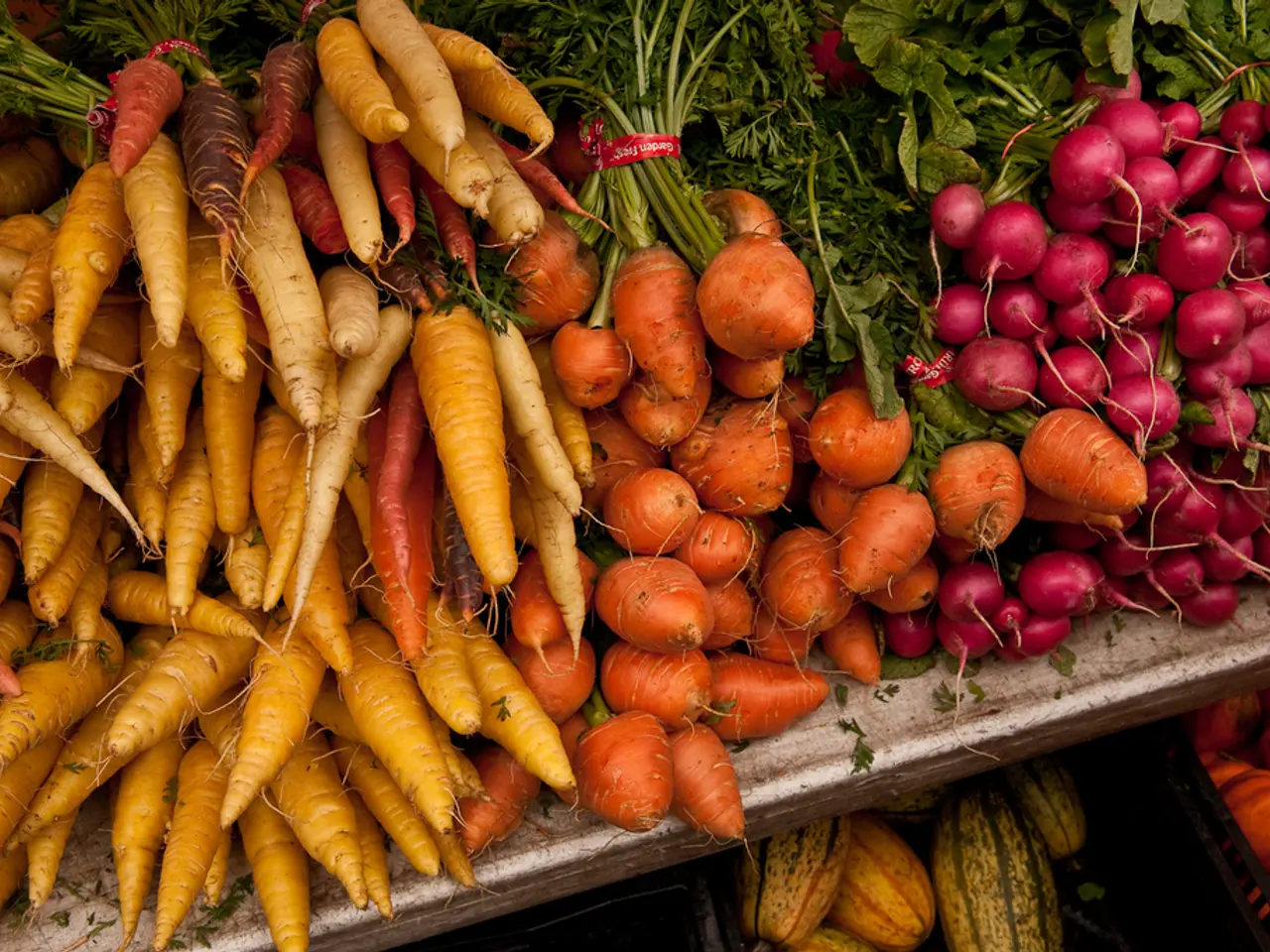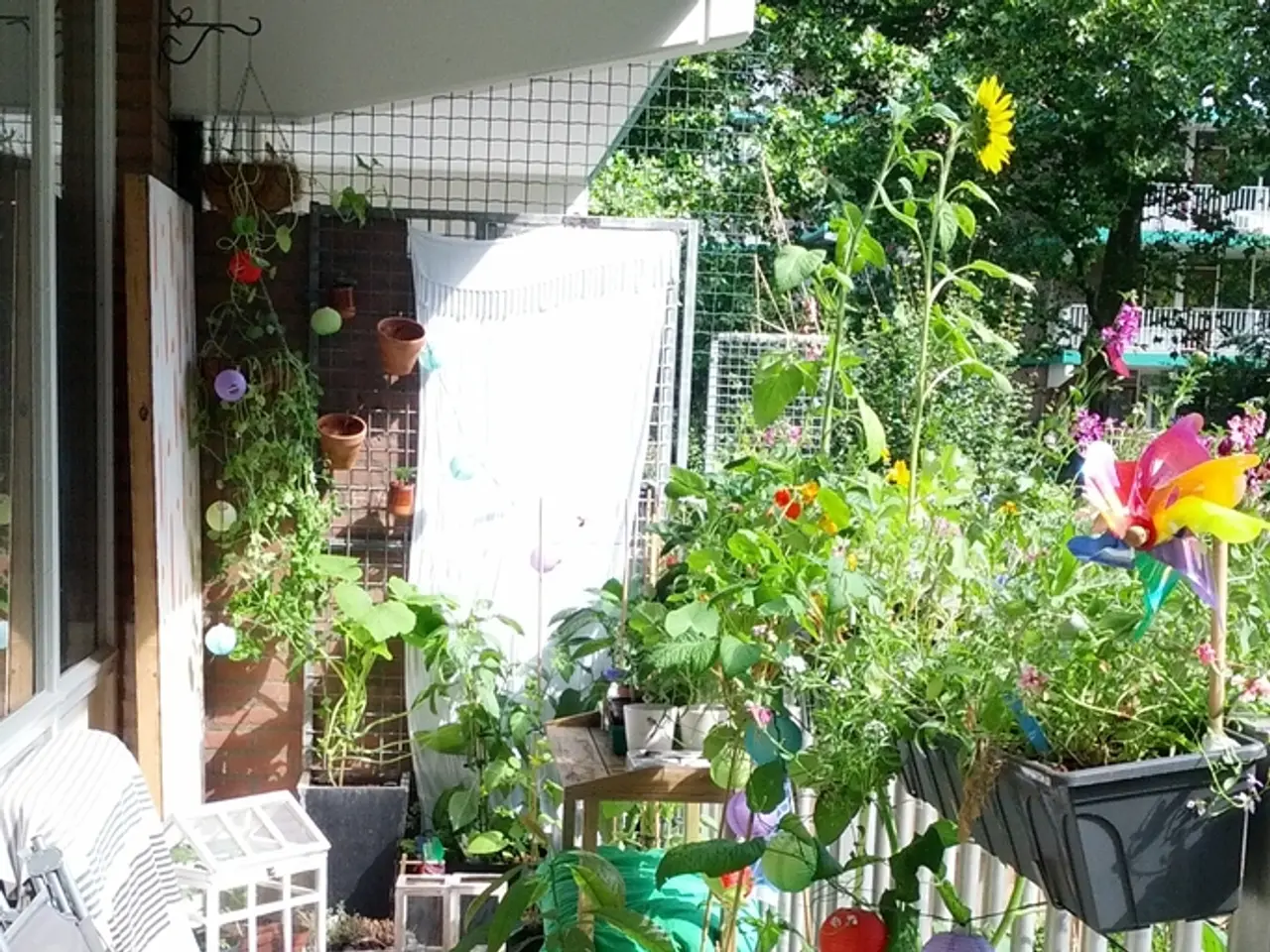Expanding Garden Soil for Vegetable Cultivation: Unveiling the Special Formula
In the quest for a bountiful vegetable garden, the foundation lies in the soil. Here are some best practices to improve soil structure, nutrient balance, and overall health.
To begin, it's essential to understand your soil type. Whether it's sandy, clay, or loamy, each requires specific amendments to foster a fertile and well-draining environment. For sandy soil, incorporate 3 to 4 inches of organic matter such as compost or well-rotted manure, along with a sustainable alternative like coconut coir to aid in moisture retention.
Organic fertilizers, such as compost and aged manure, are recommended for vegetable gardens. They provide a slow-release form of nutrients and contribute to soil health. Other types of fertilizers, like blood meal, bone meal, kelp meal, and rock phosphate, can be added to address specific nutrient needs, such as nitrogen, phosphorus, and potassium.
When building a new garden, a balanced mixture of 1/3 topsoil, 1/3 compost, and 1/3 peat moss or coconut fiber creates a loose, well-drained base that supports vegetable growth. For clay soil, start by adding 3 to 4 inches of compost to make it more workable, and consider incorporating fibrous materials like straw or fine bark mulch for additional structure. Avoid amending clay soil with sand, as this may lead to a tough, concrete-like texture.
Topsoil, typically two to eight inches deep, provides necessary nutrients and organic matter for vegetable plants to thrive. A well-drained soil with a balance of nitrogen, phosphorus, and potash, along with other micronutrients and minerals, is ideal for growing vegetables. The ideal soil type is loamy, consisting of equal parts sand, silt, and clay, which offers good drainage, aeration, and nutrients.
Improving soil structure involves careful layering and mixing. Apply a 2-3 inch layer of good-quality topsoil with high organic matter over the existing soil, mixing it in to enhance texture and nutrient content. Incorporate ample organic matter such as compost or well-rotted manure, and consider using peat moss or coconut coir based on soil type.
Other best practices include avoiding chemicals that harm soil life, using physical or natural methods like mulching or sheet mulching to control weeds, and applying mulch around plants to regulate soil moisture, temperature, and suppress weeds.
Cover crops, like clover, rye, or oats, can be planted at the end of the growing season and worked into the soil in the spring to provide nutrients and improve soil structure. Organic matter, such as leaves, straw, grass clippings, and coconut coir, can also be added to the soil to improve its structure and water-holding capacity.
For raised garden beds, a common mixture is one-third topsoil, one-third compost, and one-third peat moss or coconut fiber. When addressing drainage issues, consider the source of water, the type of soil, and whether there are obstructions preventing drainage. If drainage issues cannot be resolved, consider growing vegetables in containers with drainage holes and a high-quality planter's mix.
Perlite is another soil amendment that can be used to improve drainage and aeration in soil. It's important to test the soil before adding fertilizers to understand what nutrients it may be lacking to avoid over-fertilizing. If drainage issues persist, consider growing vegetables in containers with drainage holes and a high-quality planter's mix.
Improving soil structure and health is a gradual process that can take two to three years. By employing these best practices, you'll be well on your way to cultivating a rich, fertile, and healthy soil base that supports a thriving vegetable garden.
To achieve a healthy and productive home-and-garden, particularly in a thriving vegetable garden, understanding the soil type is crucial. When working with sandy soil, adding 3 to 5 inches of organic matter like compost, composted manure, and coconut coir can enhance the soil's structure and water retention, fostering a favorable lifestyle for vegetable growth. On the other hand, improving clay soil may require incorporating 3 to 4 inches of compost to enhance workability and texture, while steering clear of sand additions that could make the soil too dense.




